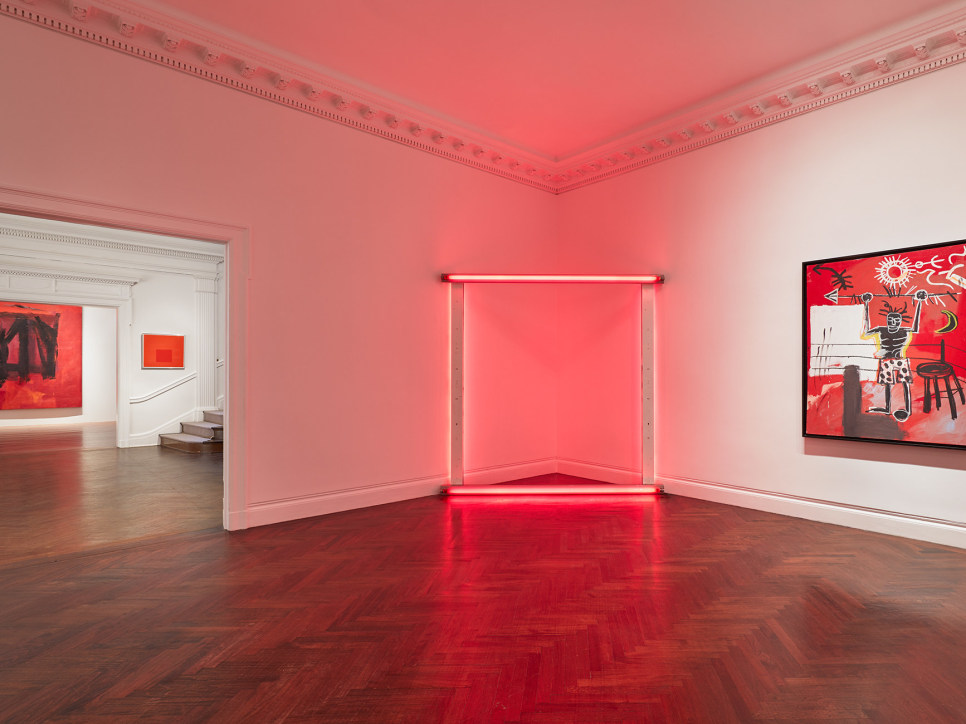
Dan Flavin was born Daniel Nicholas Flavin Jr. on April 1, 1933 in Queens, New York. Between 1947 and 1952, Flavin studied for the priesthood at the Immaculate Conception Preparatory Seminary in Brooklyn, leaving to enlist in the Air Force, where he trained as a meteorological technician. While working as a meteorological aide, Flavin studied art through an extension program at the University of Maryland. Upon his return to New York in 1956, Flavin briefly attended the Hans Hofmann School of Fine Arts and studied art history at the New School before settling at Columbia University, where he studied painting and drawing.
Associated with the Minimalist movement of the 1960s, although Flavin never approved of the term, he is best known for his work that incorporates commercial fluorescent lights. Flavin first showed an interest in fluorescent light in 1961, the same year he began to work on his "Icons" series. In the "Icons" series, incandescent and fluorescent bulbs are attached to shallow, square box forms, often made of various materials such as wood, Formica, or Masonite. In 1963, Flavin began working with fluorescent light alone, and by 1968, the sculptures had developed into room-size environments, as seen in his installation for Documenta 4 in Kassel, where the entire gallery was filled with ultraviolet light. In keeping with Minimalist tenants, Flavin confined himself to a limited palette of red, blue, green, pink, yellow, ultraviolet, and four different shades of white; and limited forms of straight two-, four-, six- and eight-foot tubes. Throughout his four-decade career, Flavin continued to play with the relationship of his sculptures and the spaces they inhabit.
A major retrospective of Flavin’s work, organized by the Dia Art Foundation and the National Gallery of Art in Washington D.C, was held between 2004 and 2007 the National Gallery of Art, Washington D.C.; the Modern Art Museum of Fort Worth; the Museum of Contemporary Art, Chicago; the Hayward Gallery, London; the Musée d’Art Moderne de la Ville de Paris; the Pinakothek der Moderne, Munich; and the Los Angeles County Museum of Art. Flavin’s work is included in the permanent collections of the Museum of Modern Art, New York; the Art Institute of Chicago; the Menil Collection, Houston; and the Solomon R. Guggenheim Museum, New York, among others.
Dan Flavin died November 29, 1996 in Riverhead, New York. His legacy is survived by the Dan Flavin Art Institute in Bridgehampton, New York, opened in 1983 by the Dia Art Foundation in collaboration with the artist, which houses permanent displays of his work.